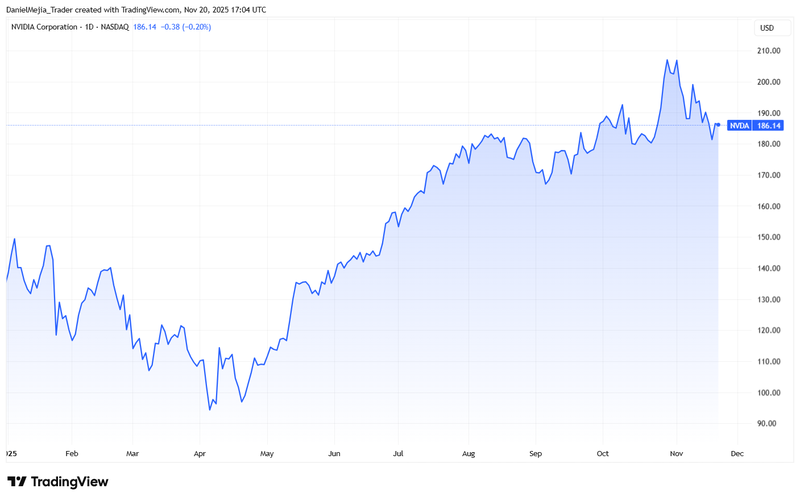Nvidia outperforms in Q3; US jobs data mixed
Nvidia reported third-quarter results that comfortably exceeded market expectations for both revenue and earnings per share, reinforcing its leadership in semiconductors and AI compute. At the same time, revised US labour-market data for September were mixed: non-farm payrolls were revised higher, yet the unemployment rate rose above consensus.

Nvidia delivered strong top-line and EPS beats in Q3, reporting US$57.0 billion of revenue (vs US$54.89 billion consensus) and an EPS beat that supported an initial positive gap in the share price.
The US Bureau of Labor Statistics’ revision for September showed non-farm payrolls up by 119,000 but an unemployment rate of 4.4 per cent — both outcomes surprised to the upside and point to a mixed employment picture.
Market-implied odds of a 25-basis-point Fed cut in December rose modestly after the data but remain subdued (c. 37.6 per cent), as investors await further delayed inflation prints.
Bitcoin has retraced roughly 30 per cent from its October high and is trading in a materially lower, more volatile range, reflecting renewed risk aversion and shifting institutional allocations.
Nvidia Q3 financial report outstrips forecasts
Nvidia once again outperformed analysts’ expectations in the third quarter. The company reported total revenue of US$57.0 billion, ahead of the US$54.89 billion consensus, and recorded earnings per share that modestly exceeded forecasts (consensus EPS c. US$1.25; reported EPS US$1.30, per the company release). The results imply year-on-year revenue growth of approximately 62 per cent and an EPS increase of roughly 60 per cent. Quarter-on-quarter comparisons also showed strong sequential momentum.
Investors initially rewarded the print: Nvidia shares opened with an upward gap of around 5 per cent. Intraday moves were more muted, however, as market participants balanced optimism about continued share gains and AI demand against considerations of competition and the sustainability of very high growth rates in a capital-intensive industry. While Nvidia’s earnings reinforce its position in AI compute and data-centre markets, the competitive landscape and elevated valuations warrant close scrutiny in subsequent quarters.

Figure 1. Nvidia share price (year-to-date). Source: Nasdaq; analysis via TradingView.
US employment data: improvement in hires, uptick in unemployment
Revised official data for September painted a mixed employment picture. Non-farm payrolls were revised to an increase of 119,000 — a material upward adjustment from the previously reported decline — indicating stronger hiring than earlier believed. At the same time, the unemployment rate ticked up to 4.4 per cent from 4.3 per cent, and both series surprised surveys.
The combination—more jobs created but a slightly higher unemployment rate—may reflect greater labour-force participation or revisions to household survey classifications; it complicates the interpretation of labour-market slack. Following the release, the CME Group’s FedWatch Tool showed the market-implied probability of a 25-basis-point cut in December rising to about 37.6 per cent from c. 33.6 per cent the previous day. Traders will now focus on forthcoming inflation prints, which were delayed by the government shutdown, to better assess the Federal Open Market Committee’s path.
Bitcoin retraces from October peak amid wider uncertainty
Bitcoin has declined significantly since its October all-time high of approximately US$124,600. The cryptocurrency now trades close to US$87,000, representing an approximate 30 per cent drawdown from that peak. The correction reflects a broader retreat from risk assets amid geopolitical, macroeconomic and monetary-policy uncertainty; flows into traditional safe havens, such as gold, have increased in parallel.
Although Bitcoin has been discussed in some quarters as a digital store of value, its price action through the latest cycle has decoupled from gold at times and remains highly sensitive to shifts in liquidity and risk sentiment. Institutional appetite appears to have moderated relative to the highs, and market participants will be watching on-chain indicators, macro data releases and regulatory developments for signs of renewed conviction.
